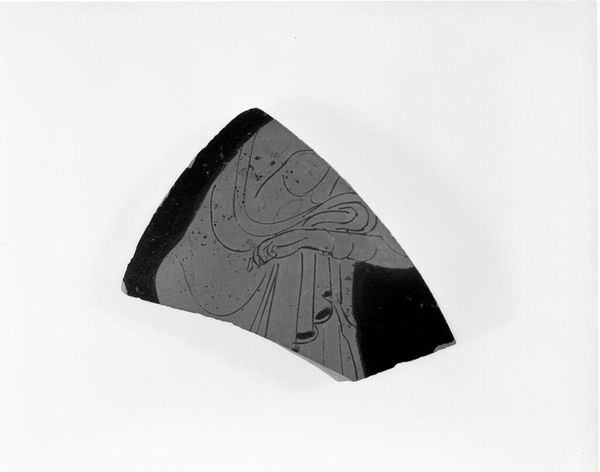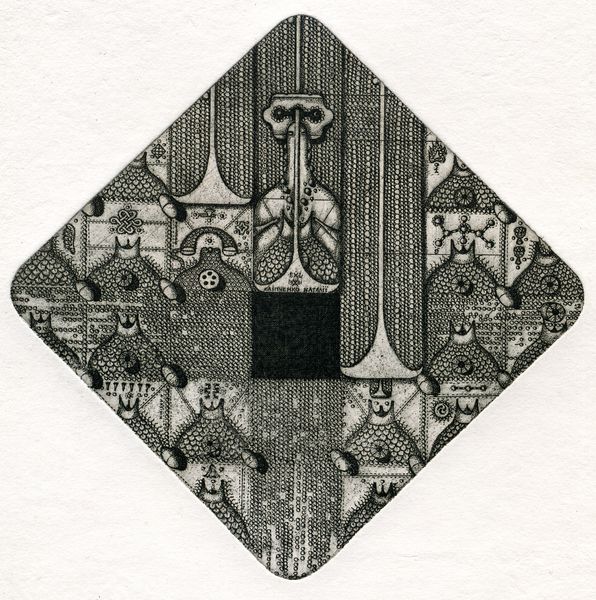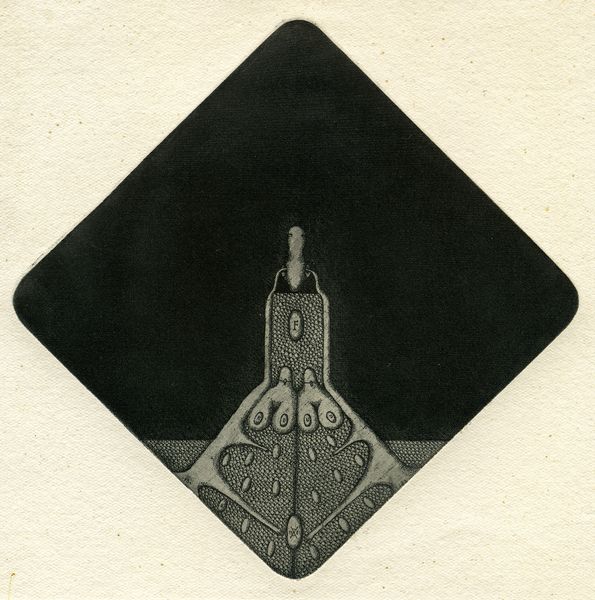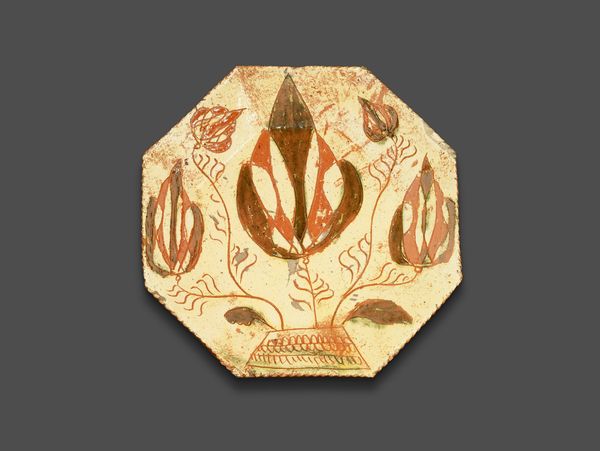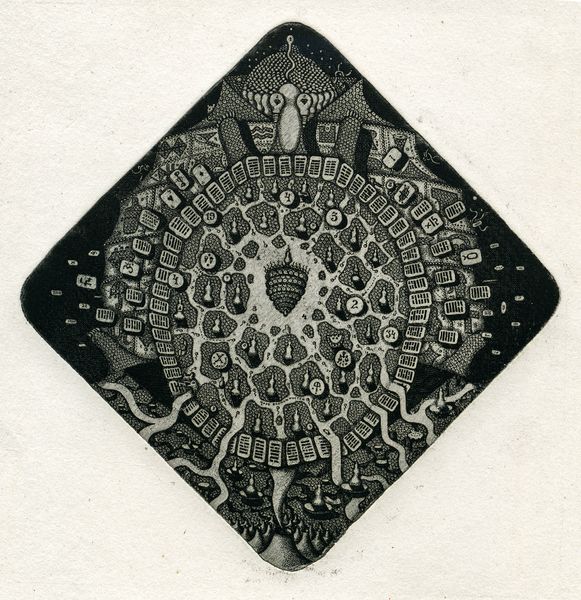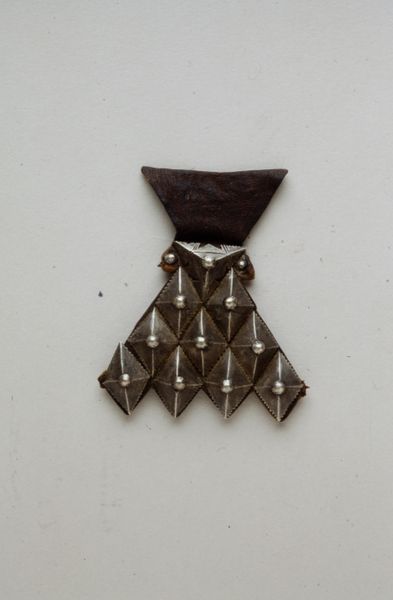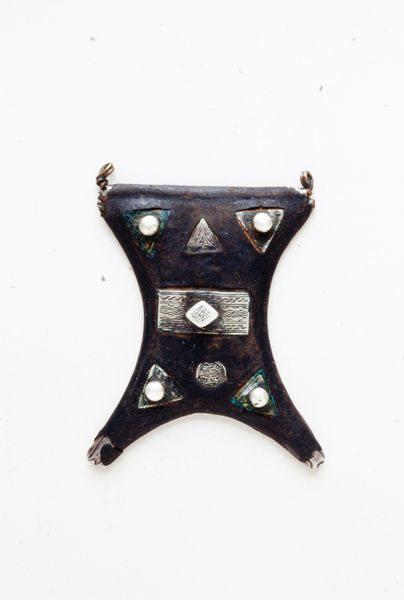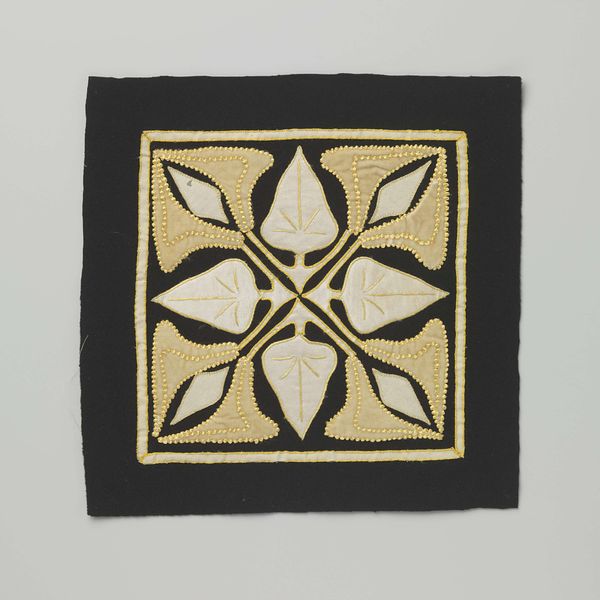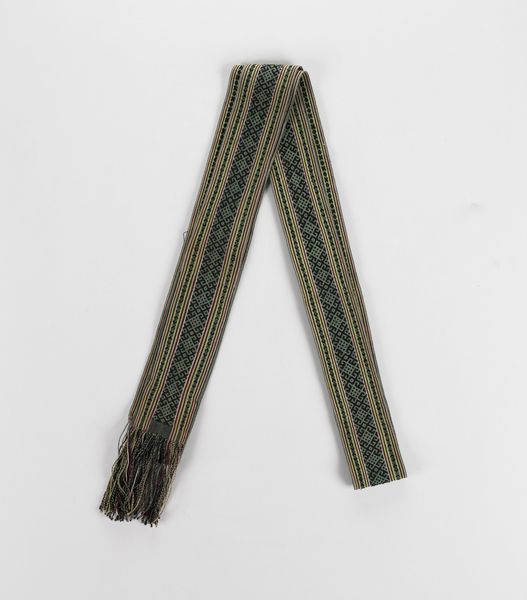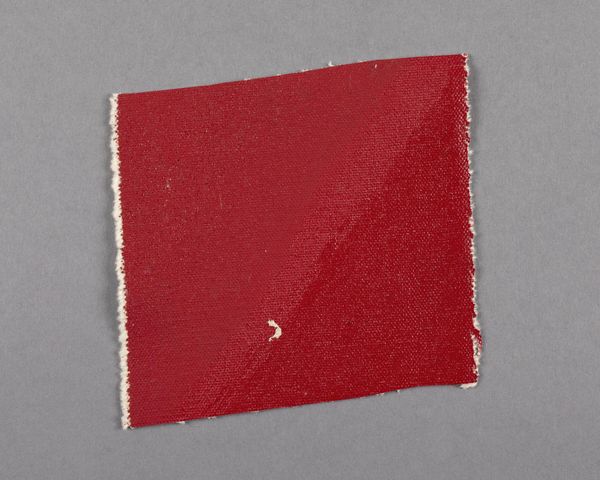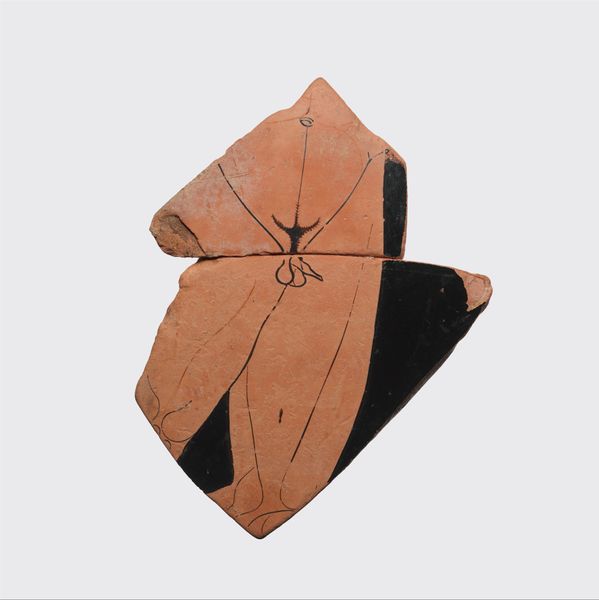
textile
#
arts-&-crafts-movement
#
textile
#
bold defined shape
#
geometric
#
embossed
#
decorative-art
#
repetition of shape
Dimensions: height 15 cm, width 13 cm
Copyright: Rijks Museum: Open Domain
Curator: This striking piece is titled “Driehoekig handwerk met borduurwerk,” or “Triangular Handwork with Embroidery,” believed to be crafted around 1900 by the artist Aagje Tiket. It’s a textile work, showcasing remarkable embroidery skills. Editor: My first thought is how soothing the color palette is. The earthy green contrasted with the bright embroidery gives the shape of the piece real prominence, I almost want to describe it as a harmonic triangle! Curator: The piece certainly resonates with principles found in the Arts and Crafts movement, flourishing at that time. We see the emphasis on handmade quality and simple yet elegant designs. The geometry, so elemental, enhances that, wouldn’t you agree? Editor: Absolutely. The triangle itself—the foundation of the piece—takes on significance. Triangles appear in different socio-historical frameworks, whether referencing religious icons or ancient geometry that ties into craftsmanship itself. Is it about a stable, unified, society—or conversely about change and transformation? Curator: An intriguing question. Consider the relationship of the texture of the embroidery against the field of cloth: The stitches build these lovely, self-similar curves… and you also find yourself studying the negative space *between* the repetitions of those patterns in the piece. That really changes the experience, almost causing an ambiguity between figure and ground, wouldn't you say? Editor: I find myself more curious about Aagje Tiket. We understand, conceptually, her labor represented through the labor of the stitch. How would her own class or gender affected how that labor was consumed and commodified at the time? In an early era of increasing manufacturing power, how was her art viewed within craft discourses and gender expectations of that moment? Curator: This piece functions beyond just being pretty ornamentation, right? Its form encourages introspection, and maybe an engagement with core, underlying structures… Perhaps Tiket aimed to convey her message simply. Editor: Indeed, I'm left wondering how this might reflect gender roles within a changing society. Curator: Food for thought, truly. Thanks for lending me your expertise to understanding this piece and the important considerations to consider. Editor: It was my pleasure. And thank you, your insights allow for an amazing understanding of form and structure.
Comments
No comments
Be the first to comment and join the conversation on the ultimate creative platform.
